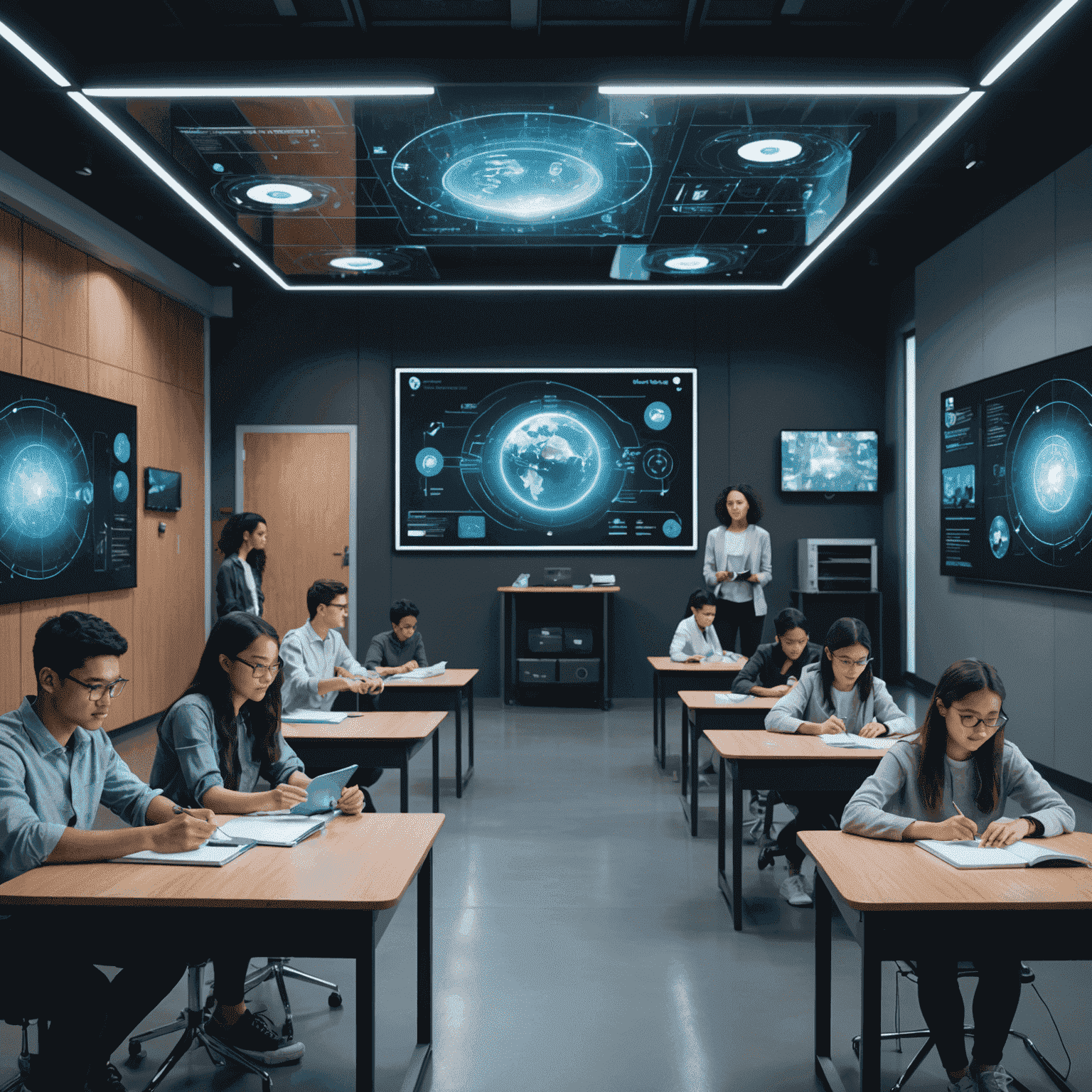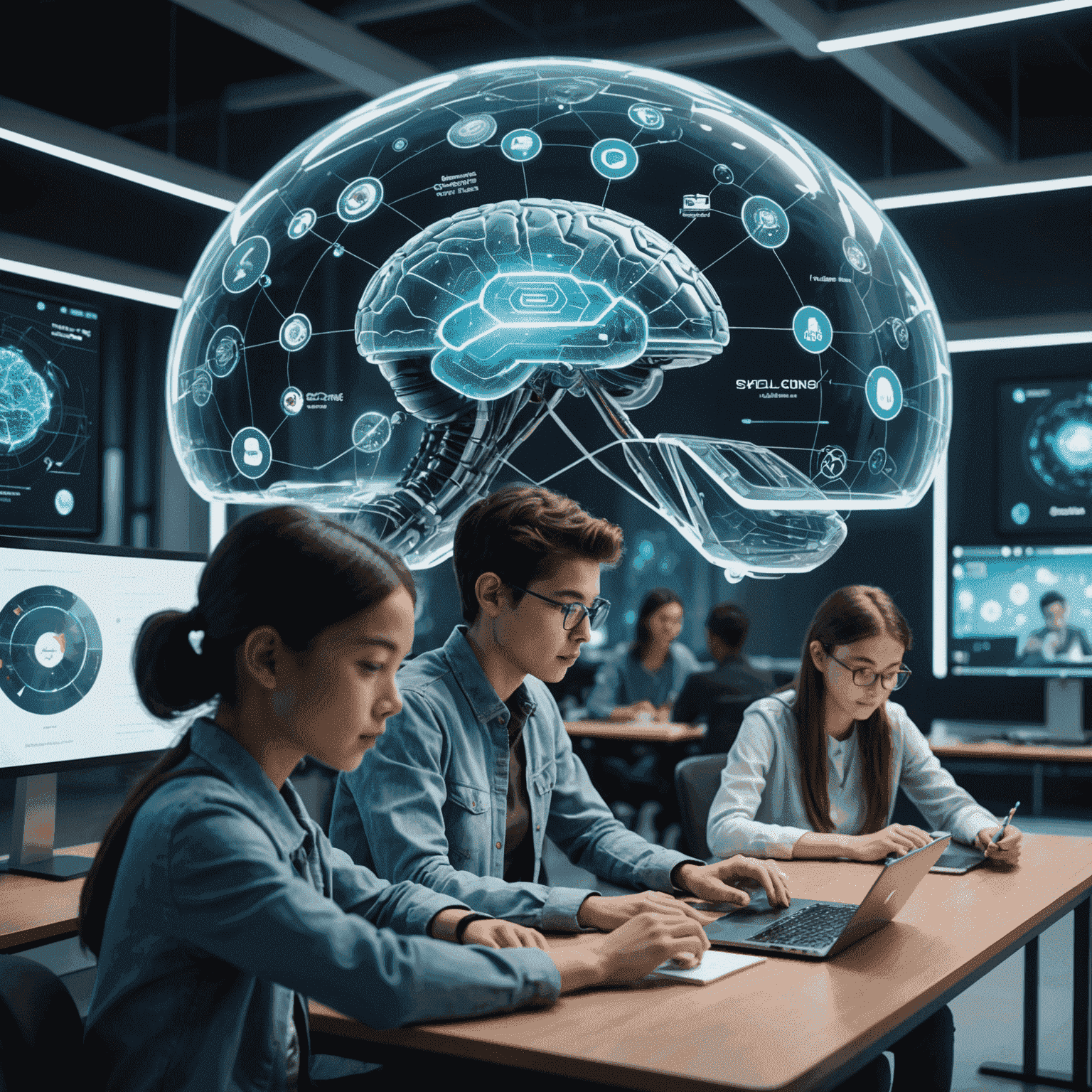EdTech Revolution: Reimagining Education in the USA

The landscape of education in the United States is undergoing a profound transformation, driven by the rapid advancement of educational technology (EdTech). This revolution is reshaping how students learn, how teachers instruct, and how educational institutions operate, creating a new paradigm that promises to make learning more engaging, personalized, and effective than ever before.
Personalized Learning Experiences
One of the most significant impacts of EdTech is the ability to tailor learning experiences to individual students. Adaptive learning platforms, powered by artificial intelligence, can assess a student's strengths, weaknesses, and learning style in real-time, adjusting the curriculum to meet their specific needs. This personalized approach ensures that each student can progress at their own pace, focusing on areas where they need the most support while being challenged in subjects where they excel.

Immersive Learning Through VR and AR
Virtual Reality (VR) and Augmented Reality (AR) are revolutionizing the way students interact with educational content. These technologies allow for immersive experiences that bring abstract concepts to life. Imagine students taking virtual field trips to ancient civilizations, exploring the human body from the inside, or conducting complex science experiments in a safe, virtual environment. This level of engagement not only makes learning more enjoyable but also helps in better retention and understanding of complex subjects.
Collaborative Learning Platforms
EdTech is breaking down the walls of traditional classrooms, enabling collaboration on a global scale. Online platforms and tools allow students from different parts of the country, or even the world, to work together on projects, share ideas, and learn from each other's diverse perspectives. This not only enhances their learning experience but also prepares them for the interconnected, global workforce they'll enter in the future.

Data-Driven Insights for Educators
EdTech tools are providing educators with unprecedented insights into student performance and engagement. Learning management systems and analytics platforms can track student progress, identify areas where students are struggling, and suggest interventions. This data-driven approach allows teachers to make informed decisions about their teaching strategies and provide targeted support to students who need it most.
Accessibility and Inclusivity
One of the most promising aspects of the EdTech revolution is its potential to make education more accessible and inclusive. Assistive technologies are helping students with disabilities participate fully in the classroom. Online learning platforms are providing opportunities for students in remote areas or with challenging schedules to access quality education. This democratization of education is opening doors for learners who might have been left behind in traditional educational settings.
The Future of EdTech in the USA
As we look to the future, the EdTech revolution in the USA shows no signs of slowing down. Emerging technologies like artificial intelligence, blockchain, and the Internet of Things are poised to further transform the educational landscape. We can expect to see more personalized learning experiences, enhanced security for student data, and even smarter, more interactive learning environments.
The EdTech revolution is not just about introducing new technologies into the classroom; it's about fundamentally reimagining what education can be. As these technologies continue to evolve and integrate into our educational systems, they have the potential to create more engaging, effective, and equitable learning experiences for all students across the United States.

As we embrace this EdTech revolution, it's crucial to remember that technology is a tool to enhance, not replace, the human elements of education. The role of teachers, mentors, and peer-to-peer interactions remains vital in nurturing well-rounded, critical thinkers who are prepared for the challenges of the future. By striking the right balance between technological innovation and human guidance, we can create an educational system that truly empowers the next generation of American learners and innovators.